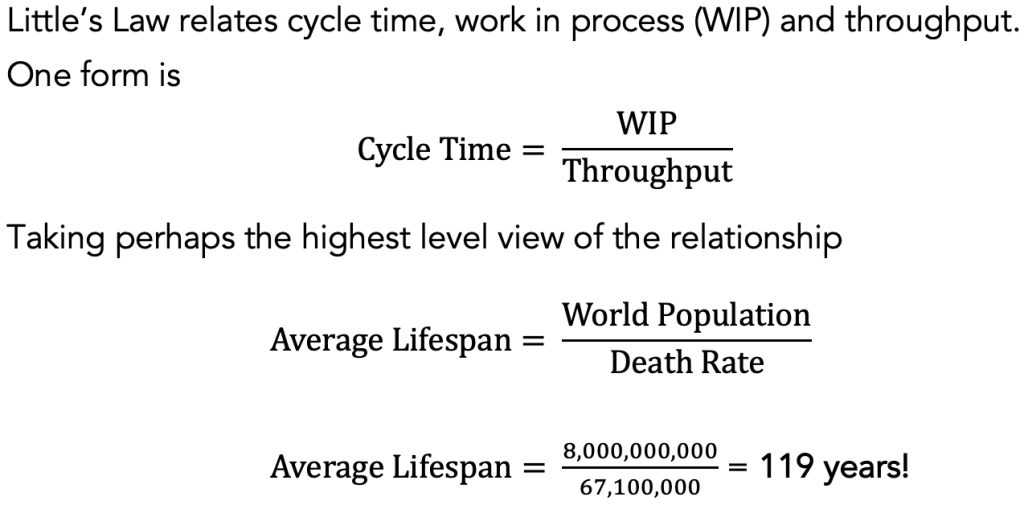Little’s Law is a fundamental relationship of operations science. For a whimsical angle, let’s look at our existence as a production system governed by operations science. Living and dying is a fundamental rule of the universe, even if in 3/4 time per Jimmy Buffet’s version. The discussion provides insight to Little’s Law and its application in more mundane situations. At the same time, we consider the great production process of life from a unique perspective.

This data is from the United Nations 2022 World Population Prospects. Something seems amiss.
The average lifespan of a human being is certainly not 119 years, though it may be in the not too distant future. Little’s Law is true by definition, it is a tautology. Is something wrong with our data?
Women generally live longer than men, but if we assume a 77 year lifespan for any human and hold that the population of the planet is correct, we get an average death rate of 104 million people per year, not 67.1 million.
If we use the 77 year lifespan and the UN’s 67.1 million/year death rate, the world population is only 5.2 billion.
Which number is inaccurate? Probably neither. The reason for the disconnect is that Little’s Law is precise only for steady state conditions. The world’s population growth has not been close to steady state. 77 years ago, the world population was about 2.3 billion. So it’s not that the population or death rate data are wildly inaccurate.
The death rate in 2022 does not reflect the death rate of a population of 8 billion since most of the 8 billion have not been around long enough. Indeed, UN projections are for the death rate to increase significantly in the next 20 years. The death rate increase is due to the fact that there will be more people around who are at the end of their lives, not because of disease or war.
However, according to the UN, the growth rate in population has been slowing so the use of Little’s Law for future predictions should be more accurate. In any case, it makes for interesting discussion and provides some insight for using Little’s Law in more commonplace applications. Operations science is everywhere, we welcome your insights on this perspective in the comments section.
Your people, your technology can solve your problems. Encourage and inspire employees and sustain your operations success over the long term with a common language and operations management grounded in operations science. No software or consulting required. Contact us at the Operations Science Institute and get started on the road to long-term success.



